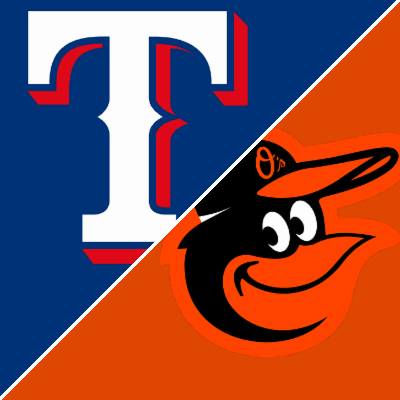
David SchoenfieldSep 17, 2025, 07:00 AM ET
- Covers MLB for ESPN.com
- Former deputy editor of Page 2
- Been with ESPN.com since 1995
Baseball fans who grew up on 20-game winners understand -- sometimes with much chagrin, sometimes with more emphatic degrees of horror -- that the expectations for a starting pitcher are much different in 2025 than 10 years ago, let alone 20, 30 or 40 years ago.
The complete game is all but dead -- no pitcher has more than one nine-inning complete game this season. One hundred pitches is now viewed as the top limit for a pitch count, with pitchers rarely exceeding 110 -- Randy Johnson had more 110-pitch outings just in 1993 than every starter combined in 2025. Pitchers get more days off between starts. And the list goes on.
Forty years ago in 1985, 20-year-old right-hander Dwight Gooden went 24-4 with a 1.53 ERA while leading the National League with 16 complete games and 268 strikeouts; left-hander John Tudor went 21-8 with a 1.93 ERA, 14 complete games and 10 shutouts.
Paul Skenes and Tarik Skubal are this season's equivalents to Gooden and Tudor, the top starting pitchers in the majors, but when you dig into their numbers compared to their 1985 counterparts, the change in the modern game for pitchers is obviously apparent and raises the question: What does an ace look like in 2025?
Skenes, who's the heavy favorite to win the NL Cy Young Award and should finish with the highest WAR for a Pittsburgh Pirates pitcher since the lively ball era began in 1920, has an MLB-best 2.03 ERA while leading the NL in strikeouts and WAR. He has had 11 scoreless outings this season -- but his win-loss record is just 10-10. Skubal is the favorite to win the AL Cy Young Award for the second straight season with just 13 wins and may not reach 200 innings, just as he didn't this past season.
While Tudor had 10 shutouts in one season, there have been just 12 complete game shutouts across the entire major leagues in 2025, nobody with more than one. The only pitcher with a shot to win 20 games, which was once the longstanding prerequisite to win a Cy Young Award, is Max Fried, who has 17 but might make just two more starts. And Skubal's and Skenes' numbers aren't even unique from recent Cy Young winners: We've seen starters secure the honor with 13 wins (Robbie Ray in 2021 and Felix Hernandez in 2010), 11 (Corbin Burnes in 2021 and Jacob deGrom in 2019) and even a mere 10 (deGrom in 2018).
But even if their stat lines differ from past top hurlers, Skenes and Skubal are having great seasons within the context of how the game is played in 2025 and how pitchers are now managed. We're not going back anytime soon to 1969, when 15 pitchers won 20 games, or 1974, when 34 pitchers threw at least 250 innings (we'll be lucky to get two or three pitchers to reach 200 innings in 2025).
So, as the regular season winds down, we set out to find what defines a great season for an ace in 2025. How should we compare the aces of the past to those of today? And what is the measure of success for an ace in 2025 compared to years prior?
To answer these questions, we went back 50 years to compare 2025 to 1975, 1985, 1995, 2005 and 2015. My colleague Kiley McDaniel suggests that there are generally about 12 aces in any given season, so we'll use that: the 12 aces from each of those seasons. Let's get into it.
Note: The 12 aces for each season were selected using Baseball-Reference WAR, innings pitched, ERA and ERA+ (which adjusts for each pitcher's league and home park run-scoring context) as the primary guidelines.
1975
Aces: Jim Palmer, Catfish Hunter, Tom Seaver, Jim Kaat, Randy Jones, Frank Tanana, Andy Messersmith, Bert Blyleven, Steve Busby, Gaylord Perry, Jerry Reuss, Vida Blue
Average ace line: 20-12, 2.69 ERA, 288 IP, 244 H, 191 SO, 80 BB, 37 GS, 19 CG, 5 SHO, 138 ERA+, 6.8 WAR
Average MLB starter: 3.80 ERA, 4.9 SO/9, 1.49 SO/BB ratio
What defined an ace in 1975: Durability ... and wins.
Defining stat: Our aces completed 226 of their 439 starts (51%) and averaged 7.8 innings per start.
The 1970s were a pitching-rich decade -- there were 96 20-win seasons in the decade -- with starters carrying big workloads, especially early in the decade when 40-start seasons and 300 innings were routine. If you were an ace, the expectation was that you would finish the game. No pitcher exemplified this quite like Gaylord Perry: From 1970 to 1975, he averaged 321 innings per season and completed 64% of his starts.
The Cy Young winners in 1975 were Palmer (23-11, 2.09 ERA, 8.4 WAR, 323 IP) and Seaver (22-9, 2.38 ERA, 7.8 WAR, 280 IP), and like all the Cy Young winners in the 1970s -- except Seaver in 1973 (when he won 19 games) and three relievers who won -- they won 20 games. The Cy Young-winning starters in this decade averaged 23 wins -- and often, wins were the deciding factor in the vote.
There was no shortage of aces to choose from in 1975 -- among those who failed to make the cut were Nolan Ryan (missed time with an injury and had just 2.6 WAR), Steve Carlton (3.56 ERA, 2.2 WAR), Fergie Jenkins (25 wins in 1974, but a 3.93 ERA in '75), Don Sutton (16 wins, 3.5 WAR) and Phil Niekro (15 wins, 3.20 ERA). In other words: five future Hall of Famers in their primes.
1985
Aces: Dwight Gooden, John Tudor, Bret Saberhagen, Dave Stieb, Charlie Leibrandt, Bert Blyleven, Rick Reuschel, Orel Hershiser, Fernando Valenzuela, Jack Morris, Ron Guidry, Bob Welch
Average ace line: 18-8, 2.54 ERA, 248 IP, 204 H, 67 BB, 167 SO, 33 GS, 12 CG, 4 SHO, 157 ERA+, 6.6 WAR
Average MLB starter: 3.96 ERA, 5.2 SO/9, 1.65 SO/BB ratio
What defined an ace in 1985: A great secondary pitch.
Defining stat: The 157 ERA+ was a big increase from 1975.
It's probably not fair to compare Skenes to Gooden, since Gooden's 1985 season ranks as one of the best pitching seasons of all time. In a normal season, Tudor would have cruised to a Cy Young Award, but he finished second to Gooden in '85 while Saberhagen -- another right-hander who was just 21 years old -- won AL honors after going 20-6 with a 2.87 ERA. Thanks to Gooden and Tudor, the average ERA+ of the 1985 aces soared much higher than in 1975, but because they were pitching fewer innings, their overall value remained almost identical.
Gooden and Saberhagen had blistering fastballs, and just them and Welch probably fit the description of "fastball pitcher" -- unlike many of the 1970s aces who did rely heavily on a fastball. For the most part, however, this group stands out for a notable secondary pitch as the best weapon -- and even Gooden had that monster 12-to-6 curveball. Tudor and Leibrandt were lefties with great changeups. Stieb had one of the best sliders of all time and Blyleven one of the best curveballs. The young Hershiser certainly had above-average fastball velocity, but changed speeds with his sinker, cutter, curveball and changeup. Fernando had the famous screwball, Morris a forkball and Guidry a slider.
By 1985, we had started to see an increase in the power game -- home runs had increased from 0.70 per game in 1975 to 0.86 in 1985. It wasn't quite so easy to rely primarily on a great fastball with more power up and down the lineup. Case in point: The 1975 Reds, with one of the best lineups of all time, hit just 124 home runs, which would be below average by 1985 and would outrank only the Pirates in 2025. We also see the transformation from four-man to five-man rotations and the advent of the modern closer, which led to fewer innings and fewer complete games -- although our aces still averaged nearly 250 innings.
The 1980s was the worst decade for Cy Young selections. Four relievers won, but even worse were the selections of Pete Vuckovich in 1982 (3.34 ERA, 2.8 WAR) and LaMarr Hoyt in 1983 (3.66 ERA, 3.7 WAR), who won only because they led their respective leagues in wins. Leaving out the relievers and the 1981 strike season, the average Cy Young winner in the 1980s won 22 games.
1995
Aces: Greg Maddux, Randy Johnson, David Cone, Mike Mussina, Kenny Rogers, Dennis Martinez, David Wells, Tim Wakefield, Tom Glavine, Hideo Nomo, Kevin Brown, John Smoltz
Average ace line: 16-7, 2.99 ERA, 202 IP, 170 H, 61 BB, 166 SO, 29 GS, 5 CG, 2 SHO, 157 ERA+, 5.9 WAR
Average MLB starter: 4.53 ERA, 6.0 SO/9, 1.82 SO/BB ratio
What defined an ace in 1995: Figuring out how to survive the PED era of increased offense.
Defining stat: We start to see an increase in K's per nine from our aces. In 1975, it was 6.0; in 1985, 6.1; in 1995, it increased to 7.4.
This was the strike-shortened 144-game season, so the aces are missing about three or four starts from a full 162-game season, which would have given us at least a couple 20-game winners (Maddux and Mussina each won 19) and a bunch more pitchers with 200 innings.
Around this time, the game's top-level pitchers became even more dominant in comparison to the league average starter as an offensive boom arrived due to PED usage and a livelier baseball. Our group of aces in 1995 -- which didn't include Roger Clemens or a young Pedro Martinez -- had an ERA 52 percentage points better than the average starter and a strikeout rate per nine that was 23 percentage points higher. Despite the high-run environment, Maddux went 19-2 with a 1.63 ERA while Johnson went 18-2 with a 2.48 ERA and 294 strikeouts in just 30 starts to win Cy Young honors.
In one sense, we were entering the era of the super pitcher: Maddux, Johnson, Clemens and Pedro all arguably rank among the 10 greatest starting pitchers of all time, dominating in a high-offense era, while Mussina, Glavine and Smoltz are Hall of Famers. In 1995, the MLB average was 4.85 runs per game -- compared to 4.21 in 1975 and 4.33 in 1985 -- and would climb above five runs per game in 1996, 1999 and 2000. The increased offense across the sport contributed to the decline in innings pitched, along with the continued evolution of the modern bullpen.
The average nonreliever Cy Young winner in the 1990s (skipping the shortened 1994 season) won 20 games per season, with a few still securing the honor mainly because of their win total (most famously, 27-game winner Welch in 1990 over 21-game winner Clemens, despite Clemens posting an ERA more than a run lower, 1.93 to 2.95).
2005
Aces: Roger Clemens, Dontrelle Willis, Johan Santana, Pedro Martinez, Andy Pettitte, Roy Oswalt, Randy Johnson, Chris Carpenter, Roy Halladay, John Smoltz, Mark Buehrle, Jake Peavy
Average ace line: 16-8, 2.82 ERA, 220 IP, 190 H, 46 BB, 185 SO, 32 GS, 4 CG, 2 SHO, 155 ERA+, 6.1 WAR
Average MLB starter: 4.36 ERA, 6.0 SO/9, 2.08 SO/BB ratio
What defined an ace in 2005: Striking out a lot more batters than they walked.
Defining stat: Strikeout-to-walk ratio. In 1975, our aces had a SO/BB ratio of 2.4; in 1985, 2.5; in 1995, 2.7; but in 2005, it was all the way up to 4.0.
For whatever reason, 2005 saw a minor dip in offense from surrounding seasons (the MLB average was 4.81 runs per game in 2004 and 4.86 in 2006 but 4.59 this season). Clemens had his last great season, leading the NL with a 1.87 ERA and 7.8 WAR, although with 13 wins, he finished third in the Cy Young voting behind Carpenter (21-5, 2.83 ERA, 5.8 WAR) and Willis (22-10, 2.63 ERA, 7.3 WAR). The AL Cy Young voting similarly registered wins as the priority: Santana was 16-7 with a 2.87 ERA and 7.2 WAR and should have won, but 21-game winner Bartolo Colon with a 3.48 ERA captured the honor.
Overall, our aces carried a similar workload to 1995 and remained as productive, with a high ERA+ while averaging over 6.0 WAR. The biggest difference, of course, was how the aces got there: more strikeouts and fewer walks. Halladay best symbolized this new generation of aces, who combined strikeout stuff with great control. Indeed, he made the list of aces even though he made just 19 starts in 2005 -- but he went 12-4 with a 2.41 ERA and 5.5 WAR, good enough to crack the top 12. Call that season a sign of things to come, where you wouldn't need to pitch 220 innings to be one of the most valuable starters.
The typical Cy Young winner in the 2000s still averaged 19.5 wins, with new "lows" set in 2006 when Brandon Webb won with just 16 wins and then Tim Lincecum in 2009 with 15 wins.
2015
Aces: Zack Greinke, Jake Arrieta, Clayton Kershaw, Max Scherzer, Dallas Keuchel, David Price, Sonny Gray, Jacob deGrom, Madison Bumgarner, Felix Hernandez, Corey Kluber, Gerrit Cole
Average ace line: 17-8, 2.56 ERA, 218 IP, 172 H, 45 BB, 225 SO, 32 GS, 3 CG, 2 SHO, 156 ERA+, 6.1 WAR
Average MLB starter: 4.10 ERA, 7.4 SO/9, 2.73 SO/BB ratio
What defined an ace in 2015: Strikeouts!
Defining stat: The strikeout rate for our aces climbed to over one per inning at 9.3 K's per nine.
This season featured one of the best three-way Cy Young races of all time, when Greinke and Arrieta posted ERAs under 2.00 while Kershaw had a 2.13 ERA with 301 strikeouts. Greinke was 19-3 with a 1.66 ERA and 8.9 WAR, but Arrieta won after going 22-6 with a 1.77 ERA and 8.3 WAR.
The increased strikeout rate is a reflection of a couple of things: We were near the beginning of the high-velocity era for pitchers, but what set apart these aces is multiple strikeout pitches to go along with their fastballs. Arrieta featured two fastballs, a slider, curveball and changeup, and Greinke had the same five-pitch repertoire. Kershaw had pinpoint control of his fastball and two unhittable off-speed pitches in his curveball and slider. King Felix had an A+ changeup and a great curveball. Kluber parlayed a cutter/slider/curveball combo into two Cy Youngs. Scherzer and deGrom had everything -- overpowering fastballs, control and multiple off-speed weapons. It was a new wave of dominance that we had never seen before.
The typical Cy Young winner in the 2010s still averaged 18.8 wins. It was a very controversial selection when Hernandez won in 2010 despite going just 13-12 for a terrible Mariners team, and wins still generally remained a key factor in Cy Young voting during this decade. As late as 2016, Rick Porcello (22-6, 4.7 WAR) beat out Justin Verlander (16-9, 7.4 WAR) primarily because he won more games (Verlander actually had more first-place votes, 14 to 8). However, the tide had shifted by the time deGrom took home the honor in 2018 and 2019 despite winning just 10 and 11 games, respectively. He was clearly the best pitcher in the NL and received 29 of 30 first-place votes both years.
2025
Aces: Paul Skenes, Cristopher Sanchez, Tarik Skubal, Hunter Brown, Garrett Crochet, Nick Pivetta, Freddy Peralta, Ranger Suarez, Zack Wheeler, Yoshinobu Yamamoto, Logan Webb, Max Fried
Average ace line: 13-6, 2.65 ERA, 174 IP, 137 H, 44 BB, 195 SO, 16 HR, 29 GS, 1 CG, 0 SHO, 162 ERA+, 5.4 WAR
Average MLB starter: 4.18 ERA, 8.4 SO/9, 2.62 SO/BB ratio
What defines an ace in 2025: Dominance over shorter outings.
Defining stat: Our aces have allowed no runs or one run in 171 out of 346 starts.
Those totals will climb a bit over the final days of the season, but we're still seeing a 30-to-40-inning drop in workload from a decade prior, and thus a slight drop in overall value despite a high rate of productivity. The trade-off with fewer innings is that these aces are expected to dominate over those shorter outings, which often now last just six or seven innings. Skenes has pitched more than seven innings just three times and Skubal just twice (although, one of those was his first career complete game).
Of course, fewer innings means fewer decisions and thus fewer wins from the elite starters. The eight Cy Young winners from 2021 to 2024 averaged just 15.1 wins per season and the last 20-game Cy Young winner was Verlander in 2019.
Conclusion
The days of multiple 20-game winners vying for Cy Young honors are long gone, but I hope we've adjusted our thinking and can still appreciate what Skenes and Skubal -- and Sanchez, Crochet, Brown and the other top starters -- have accomplished in an era that is much different from 1975 or 1985.
A stat like WAR is a good way to look at this. Skenes has 7.2 WAR -- higher than nine of the Cy Young starting pitchers of the 1970s and eight from the 1980s. Skenes is just as valuable in 2025 as many of the top pitchers were 40 and 50 years ago in their era.
Will his 2025 campaign go down as a legendary season like Gooden had in 1985? No, 10-10 is not the same as 24-4, and losing that aspect of baseball history no doubt stirs up much of the consternation about the "decline" of the starting pitcher. But let's leave it at this: Dwight Gooden was a must-watch star in 1985, just as Randy Johnson and Greg Maddux were in 1995, just as Clayton Kershaw in 2015 and just as Skenes and Skubal are in 2025.
.png)
 3 weeks ago
20
3 weeks ago
20















































